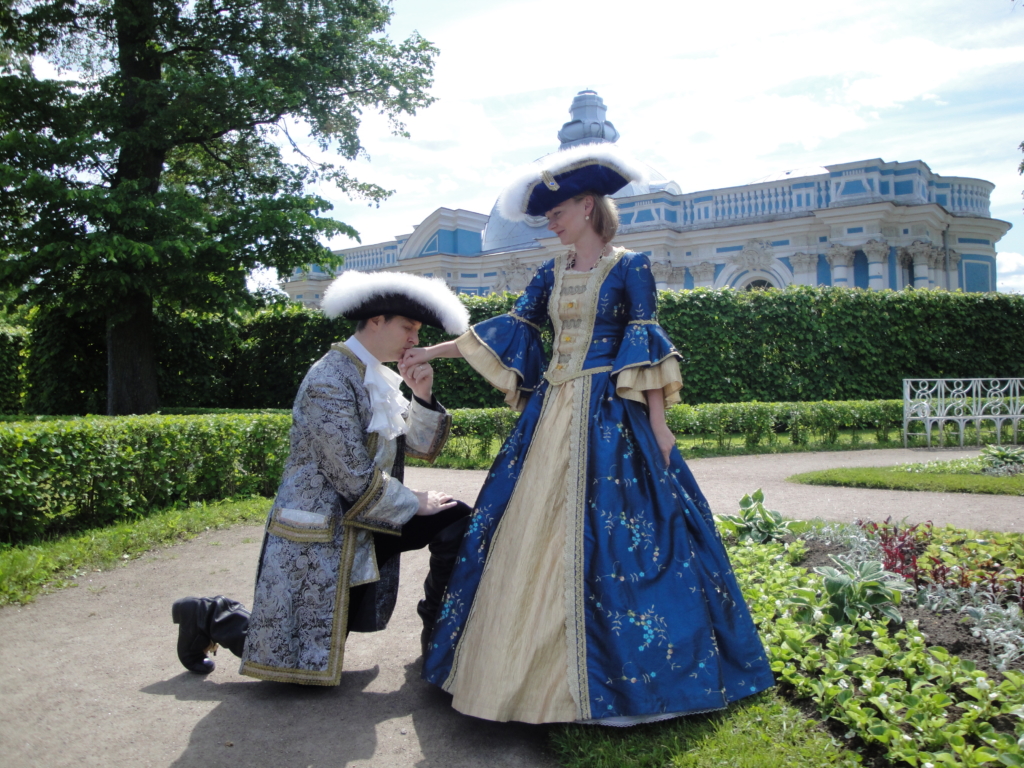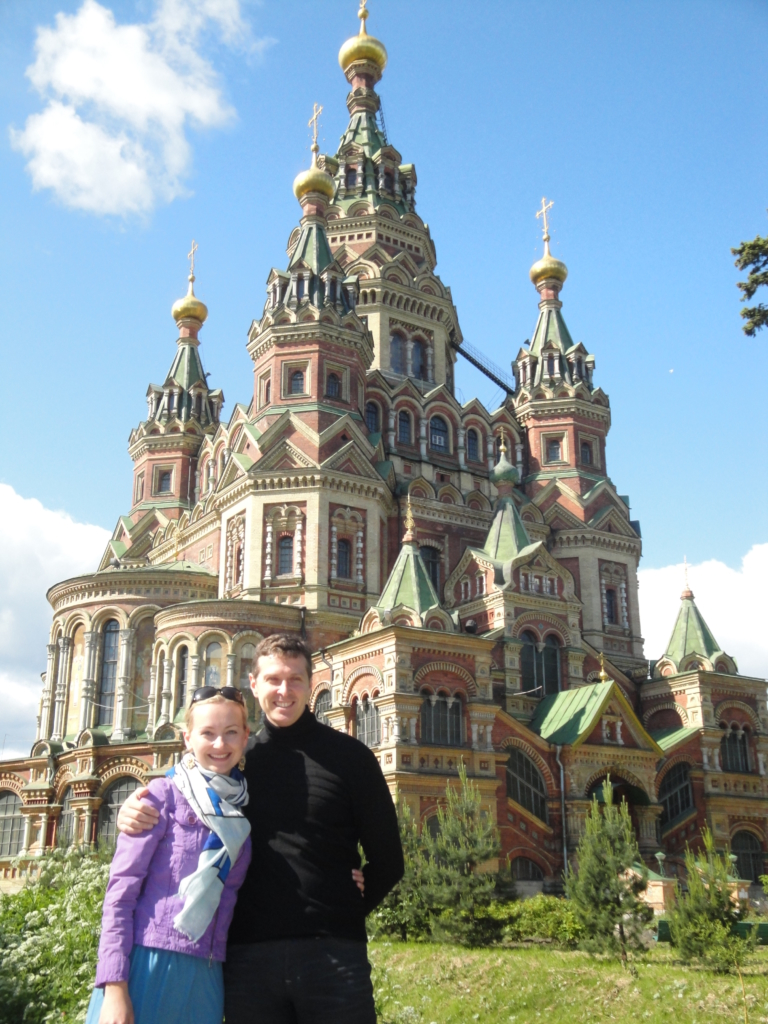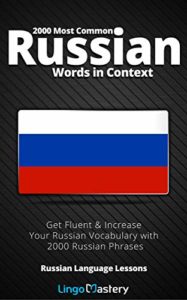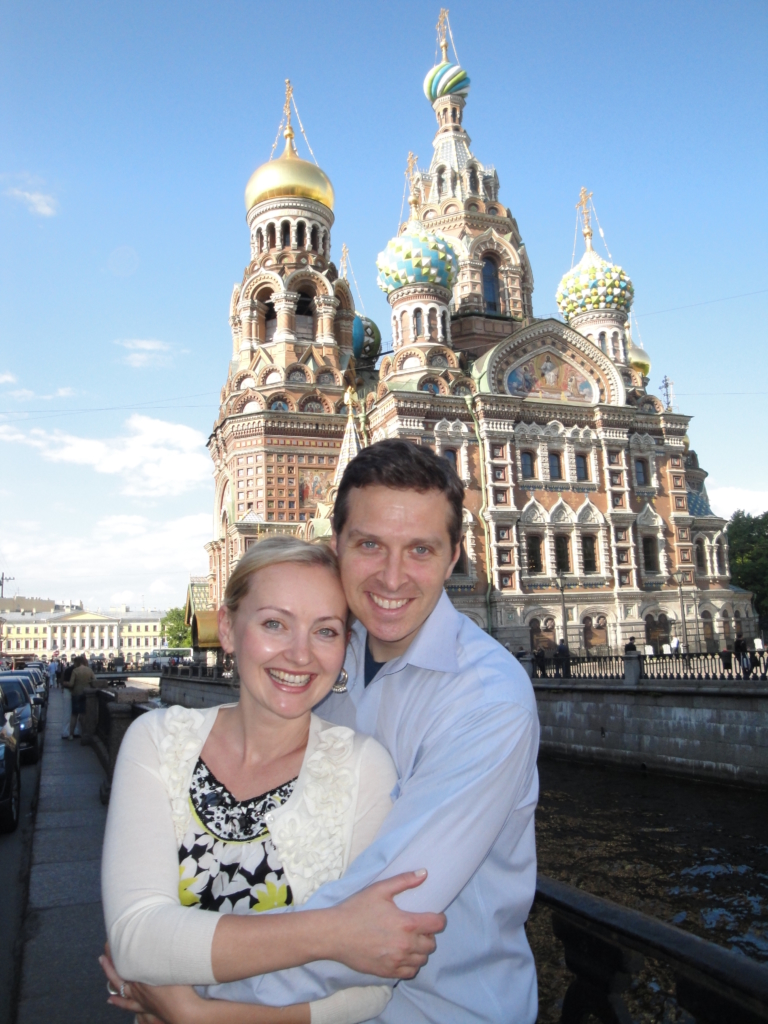I
n May, 2001, three months after the Snowbird 17 signed the Agile Manifesto , my colleague arranged a July 28 blind date for me in Kiev, Ukraine. I knew my date’s name, Nataliya, but it was a real blind date without even a profile to read. Moreover, we didn’t speak the same language. I spoke only English and Nataliya spoke only Russian and Ukrainian.
So I learned to speak Russian in three months and had a perfect blind date that lasted four days until August 2. Then—in Russian—I proposed. And she said, Da!

James and Nataliya in the former Soviet Union.
I went on to say my wedding vows in Russian. That is my language success story and this blog shares the Agile methodologies that I succeeded with and what I’ve learned retrospectively. It would be years before I formally practiced Scrum but I intuitively followed Agile Scrum principles to learn conversational Russian efficiently.
James and Nataliya Russian Wedding Vows
I followed the four steps below which require two hours and $12 up front plus one hour per day for ninety days. I offer no love guarantees but promise you quick language success if you follow my four Agile steps. Follow my harder fifth step to tackle the toughest jobs such as accent reduction. In line with Scrum prioritization principles, I emphasized doing the steps in the priority order below as well as prioritizing the work within each step. I iterated over all four steps repeatedly.
Step 1: Ninety-Two Seinfeld Verbs
Девяносто два русских глагола
I started by watching two hours of Seinfeld reruns and wrote down every verb used. I reasoned that if I learned these two hours of verbs then I could survive a date. Jerry and cast used ninety-two verbs which translated to learning just one verb per day for three months. I placed top priority on my step one verbs which constituted my Minimum Viable Product (MVP). My Definition of Done was clear — learn all ninety two verbs in the present tense. Following Agile Scrum ways, I regularly iterated over my learned Russian verbs to perfect my knowledge of them.
Step 2: Russian Sweet Nothings
Русские сладкие пустяки

James and Nataliya in Saint Petersburg, Russia
As next priority, I asked three Russian colleagues to share every Russian sweet nothing that they knew. I ordered and learned them from most basic and common like meelaya maya (my sweetie), golupka maya (my dove) and solnishka maya (my sunshine) to romantic showstoppers like dama maeva serdtsa (queen of my heart). I showcased my progress with my colleagues to develop an inspect and adapt feedback loop.
Step 3: Frequency Focus
Фокус частоты
I soon found learning one verb and one sweet nothing per day too easy so I spent $12 on a book with an ordered list of the most frequently used Russian words. I allotted time to learn twelve nouns from the book each day plus the one verb and one sweet nothing. By remembering more words than I forgot, my vocabulary reached over 1,000 words in three months.

Learning the first thousand most frequently used words of a language will allow you to understand 76.0% of all non-fiction writing, 79.6% of all fiction writing and an astounding 87.8% of all oral speech.
–Lingo Mastery
Step 4: Don’t Need it? Don’t Learn it.
Не нужно? Не учись этому.
I didn’t bother with adjectives because they are not needed to express who did what when. Learning adverbs might have helped but I had to cut a corner somewhere so I skipped them. I also, gained efficiency by skipping common words that I don’t use, e.g., I skipped cigarette because I don’t smoke.
Ready for Kiev
With all four language learning steps completed, I boarded the plane to Kiev ready to share my inner feelings in Russian. To reduce risk of conversation block failure, I brought along a hand held translator which did indeed help when I didn’t know the noun that went with one of Seinfeld’s verbs.
I hit it off with doragaya loobeemaya maya (my dear love), Nataliya. We got engaged, got married, and remain married eighteen years later. Nataliya followed my language strategy to learn English and get an accounting job at PWC.
Step 5: Final Secrets
Последние секреты

James and Nataliya in Saint Petersburg, Russia
After marriage, I continued my Russian studies and learned two final secrets to share. I got an in-country tutor on convenient Skype at the in-country price of $15/hour. Ultimately, I visited him at his St. Petersburg school for two weeks of all day lessons. Agile Scrum emphasizes team co-location for good reason–proximity breeds closeness and communication.
Skype tutors and in-country immersion are the capstone to my system. Although more expensive and time consuming, they provided the feedback loop and motivation I needed to approach native speaker ability, especially for accent reduction.
Indeed, Russians I meet think I’m a native speaker as long as I’m talking or if they aren’t funny. I understand bad jokes but still struggle with a surprising twist of Russian humor. No worries, if I miss a joke, I laugh along with the crowd and think of Jerry Seinfeld.
Citations: Wedding video footage by Chris Pettograsso. All photos by anonymous street bypassers.

